Rushed Conservation: Is Belize’s Blue Bonds Deal Sacrificing Fishermen for Global Praise?
“This story was produced with support from the Earth Journalism Network.”
On November 4th, 2021, Belize took a bold step in reshaping its economic future with the signing of the Blue Bonds deal. In partnership with The Nature Conservancy (TNC), the government committed to one of the most transformative financial restructurings in the country’s history, built on the foundations of marine conservation and sustainable fisheries. This landmark agreement, officially titled the Blue Loan Agreement and Conservation Funding Agreement, positioned Belize as a global leader in aligning economic growth with environmental stewardship.
The agreement obligates the government to protect 25% of its ocean space. Belize has legally designated 20.05% of its total ocean space, equivalent to 669,046 hectares as Biodiversity Protection Zones (BPZs). To meet the Milestone 4 target, a minimum of 165,100 hectares, or 4.95% of Belize’s ocean space, is being proposed for designation as Medium Protection Biodiversity Zones. Milestone 4 must be met by the deadline, which is November 4th, 2024.
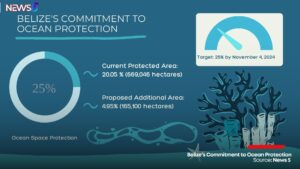
The government’s latest proposal includes areas like Lighthouse Reef Atoll, Glovers Reef Atoll, and East of Bacalar Chico Marine Reserve, but concerns are mounting that fisherfolk and other local stakeholders have not been adequately consulted.
As Belize approaches a critical milestone in its Blue Bonds deal, growing friction reveals underlying tensions between stakeholders. While the government moves forward to meet the commitment of designating 30% of Belize’s waters as protected zones, some local fishermen and others fear the deal’s rapid implementation is sidelining their livelihoods and interests. As stakeholders weigh in, it becomes clear that a balanced approach is essential—not just for Belize’s marine ecosystem but for the well-being of its coastal communities.
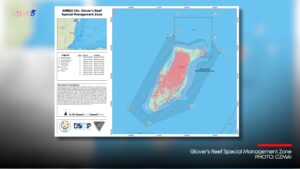

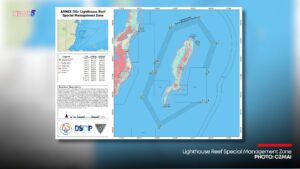
Fishermen in Belize are expressing concerns about the government’s handling of the Blue Bonds deal. Central to this concern is a troubling lack of transparency surrounding fisheries, particularly in stock assessments and the accuracy of resource data.
In February, Belize’s government claimed that recent stock assessments indicated strong recruitment and stable fish populations, suggesting sustainable fisheries. However, fishermen and the Belize Federation of Fishers (BFF) expressed serious concerns, particularly highlighted in a workshop that revealed a significant decline in fish stocks, notably conch. Discussions pointed to overharvesting of juvenile fish, the need for improved enforcement of regulations, and illegal fishing by neighbouring countries. The Fisheries Department dismissed these concerns as baseless and accused the BFF of ulterior motives, criticising their reliance on unvalidated data. Dr. Daniel Pauly, a leading fisheries expert from the Sea Around Us initiative, which recently helped to assess Belize’s fisheries stocks, highlighted the targeting of juvenile fish as a critical issue, jeopardizing future reproduction. He explained, “Belize’s coastal fishery is heavily overfished. Currently, the fish present are mostly juveniles, resulting in very few breeding adults that can sustain the population.”
The BFF, headed by Executive Director Nigel Martinez, was part of a larger group that applied the Freedom of Information Act request to have the Fisheries Department release information regarding its fish stocks. After delays and frustrations, Acting Fisheries Administrator Rigoberto Quintana emailed documents requested, some of which contained pages of redacted data. Martinez, who continues to review the data, says it is not satisfactory.
Without transparent data and effective stakeholder engagement, the path to conservation could alienate those it aims to benefit most.
They fear that the urgent push to meet conservation targets is disregarding their input and threatening their livelihoods. As the November 4th, 2024 deadline for establishing new marine protected areas approaches, local fishermen worry that inadequate consultation may lead to decisions that do not address their needs.
On August 17th, 2024, the Belize Fisheries Department posted a list of 9 dates and locations for “consultations” on the expansion of the BPZs. The first consultation was scheduled for August 21st and the final for the 28th.
Critics argue that the “science and stakeholder-driven process” touted by the Coastal Zone Management Authority and Institute (CZMAI) and the Belize Fisheries Department (BFD) has been anything but inclusive, with consultations seen as hurried and lacking transparency.
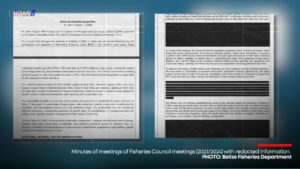
One of those critics is the Belize Federation of Fishers (BFF) and its Executive Director Nigel Martinez, who says the consultation was “poorly organised” and lacking necessary information. According to Martinez, the lack of proper communication between consultants, organisers, and fisherfolk was evident, especially at the Belize City meeting he attended, where only a few fishers showed up. He noted that for zones like Lighthouse Reef and Glovers Reef, the consultation should have included more participants directly impacted by the proposed expansions.
But words have meaning, and some fishers quibble with how “public” and “consultation” are used in these settings. Martinez criticised the use of the term “public consultation,” stating that it was misused and that the organisers failed to meet the necessary threshold to truly engage the fishing community. He also questioned the transparency of the process and pointed out the absence of a management plan or detailed information about the proposed expansion areas. Martinez added, “Of the 300 people that participated in the countrywide workshop, 24 percent of them were fishers.”
The fishermen Channel 5 spoke with want to be included. They want to participate. It’s clear they are not against public participation or that they don’t attend meetings. However, they want proper communication and consultation. For instance, career fisherman Dale Fairweather was out at sea when the Belize City consultation was held. He said he was unaware of it. He believes that the recent consultations were simply a procedural step to fulfil obligations under the Blue Bond Agreement. Despite his concerns, Fairweather said that it is important for fishers to attend consultations to stay informed, even if they feel that the process is flawed. He added that firsthand knowledge is crucial because secondhand information often leads to misunderstandings or scepticism among the fishing community.
Fairweather asked whether the regulations for these deep-sea zones would be extended as part of the expansion, and he was told that the rules would remain the same, leaving the deep waters open to everyone. However, reporting from Amandala/XTV has shown that the confidence Fairweather and others have in the government’s assertions may be at least partly misplaced.
Local fisherfolk, who rely on these waters for their livelihoods, are especially concerned that they are being sidelined in the rush to meet international obligations. The Belize Fisheries Department insists that these meetings will allow all stakeholders to weigh in, but critics see this as little more than a formality, with decisions already largely made.
At the Belize City consultation was Acting Fisheries Administrator Rigoberto Quintana, who said that over the past six to eight months, there have been focused discussions between the Fisheries Department and various stakeholders, including the Belize Coastal Zone Management Authority and Institute, the Belize Sustainable Plan, the Belize Fund for a Sustainable Future, the Blue Bond and Finance Permanence Unit, the BFF, local fisherfolks and NGOs such as Oceana Belize and the Belize Audubon Society. He said that to ensure participation, the department is visiting key communities like Chunox, Copper Bank, and Sarteneja. According to Quintana, meetings in San Pedro and Caye Caulker saw about 40 fishers attending, which Quintana described as a good turnout, although he acknowledged the need to reach a larger number of stakeholders.
When asked how the department tracks the involvement of fishers, Quintana clarified that while there is no specific percentage of fishers they aim to engage, they rely on local community associations to spread the word and encourage participation. Quintana stressed that the consultations are not merely informational but also serve as negotiations. An accurate recording of the number of fishers and other stakeholders engaged, therefore, is difficult to gauge based on available data.
Widely praised as “innovative” and “game-changing” by Environmental Science, the US $364 million bond received accolades at the Environmental Finance’s Bond Awards 2022. It won in the categories of sustainability bond structure and sovereign sustainability bond.
The bond has been lauded by conservationists and big finance as a model for other emerging market countries aiming to meet climate goals without increasing their debt burden. It provided Belize with long-term sustainable financing for marine conservation through debt relief rather than adding new debt. This structure allowed the country to secure critical funding for marine resource conservation while delivering significant financial and environmental benefits.
Belize has reduced its national debt by approximately $190 million through the bond, while also committing around $180 million to its blue economy via an independent conservation fund.
Jamani Balderamos, Marine Spatial Plan Specialist for The Nature Conservancy (TNC), explained that the criteria for identifying the additional 4.7% of Belize’s ocean space for biodiversity protection zones are based on equity, transparency, and inclusiveness, alongside a science-based approach. He said the criteria consider ecological, economic, and social-cultural factors, as outlined in the Conservation Funding Agreement. According to Balderamos, stakeholder engagement has been a crucial part of the process. He added that one of the key activities in this engagement was the ocean use survey, where TNC and the lead agency visited 27 communities to collect data on how and where they use the ocean. Through a tool called SeaSketch, community members were able to map out their ocean use areas, indicating the value they placed on each. This information was collected using tablets in the field.
Ray Hilborn is a professor of the School of Aquatic and Fisheries Sciences at the University of Washington College of the Environment in the US. While he might not have specific experiences in Belize, Hilborn is a respected expert on sustainable fisheries. According to Professor Hilborn, the concept of sustainability varies significantly among different individuals. For instance, Sylvia Earl, a renowned figure in deep ocean exploration, asserts that no fishing can be considered sustainable since it alters the ocean, which contradicts the notion of sustainability. On the other hand, the traditional view holds that sustainable fishing is possible if it benefits humans, primarily through food and sometimes tourism, while ensuring these benefits can be enjoyed by future generations.
Hilborn explains that sustainability encompasses two main aspects: the ability to continue harvesting fish without depleting resources and ensuring that those reliant on fishing for employment can sustain their livelihoods. However, international classifications, such as those by the Food and Agriculture Organization (FAO), often overlook socio-economic impacts in their definitions of sustainable fisheries. Instead, they focus on maximising yield, labelling fisheries as unsustainable if they do not achieve this goal, even if the fishery can persist across generations.
Hilborn says that sustainability should also consider socio-economic structures, particularly for communities in places like Belize where fishing is integral to their culture and livelihoods. Hilborn says that priority must be given to food production and employment in fisheries discussions. He warns that large-scale fishing closures, often promoted by NGOs, could harm local fishermen’s livelihoods. Instead, he advocates reducing fishing pressure as a more effective solution. He cautions that large-scale fishing area closures, often pushed by well-intentioned NGOs, could unintentionally harm local fishermen’s livelihoods, comparing it to a form of colonialism.
As Belize pushes forward with plans to expand Biodiversity Protection Zones (BPZs), there is growing scepticism among fishers and conservation experts about whether these initiatives are founded on credible data and inclusive planning. While the goal of protecting 30% of Belize’s waters is a bold step toward the global 30×30 conservation target, critics argue that the government’s accounting of fish stocks and baseline data lacks transparency, fuelling concerns that local fishers’ needs and the true state of the marine environment may be overlooked.
Fisheries expert Ray Hilborn emphasises that effective conservation requires a delicate balance of ecological, economic, and social needs. When communities dependent on these resources feel excluded, conservation efforts risk alienation and potential non-compliance from those most impacted.
While Belize’s conservation ambitions at sea are commendable, critics insist that these efforts must be built on a foundation of solid, verifiable data, clear baseline assessments, and active multistakeholder involvement. Otherwise, they warn, the large-scale drive to protect the oceans may create instability for both ecosystems and the communities tasked with stewarding them.
GoB is required to expand it to cover 30% of Belize’s ocean with the marine spatial plan completed, approved, signed into law, gazetted, and implemented on November 4, 2026.





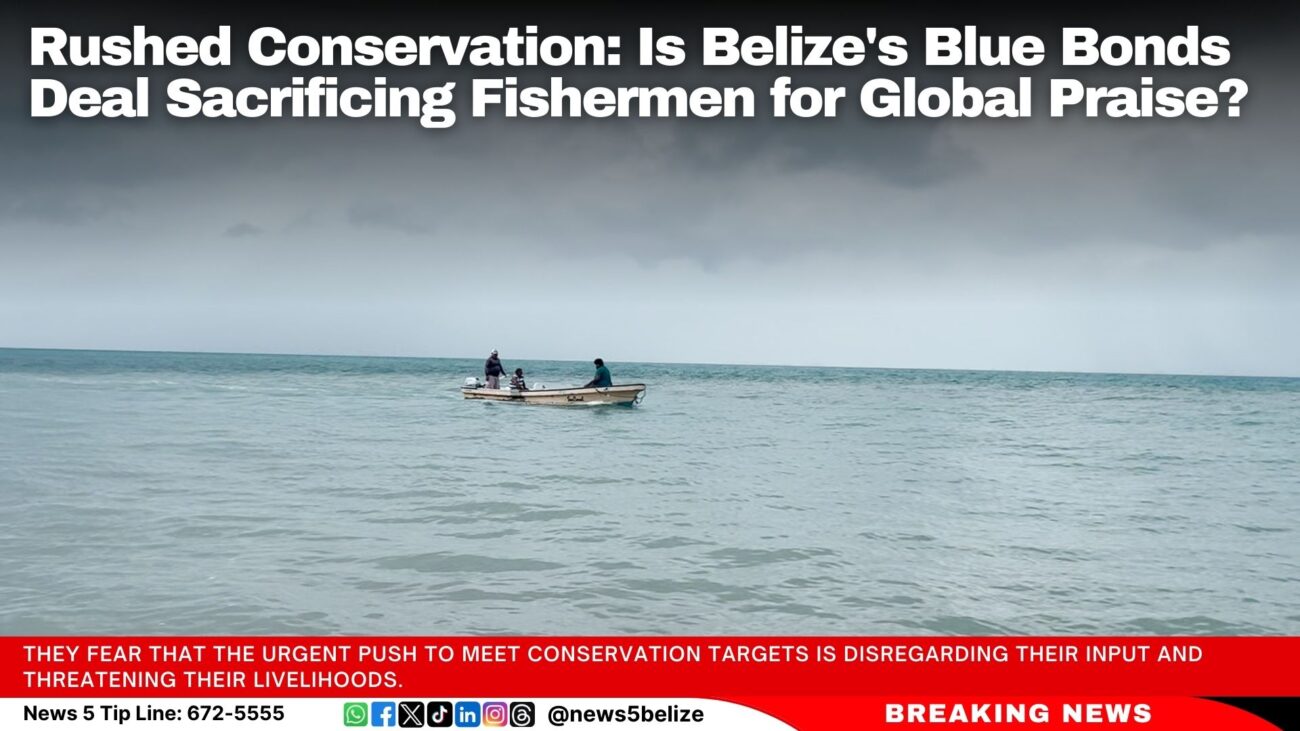

Facebook Comments